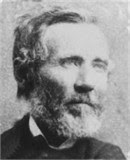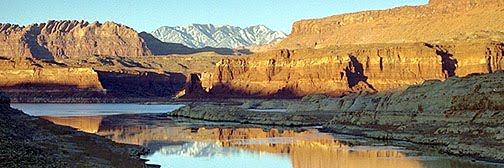 |
| William Morrison |
Apparently Morrison had been appointed the Probate Judge by the Governor and then sustained as "President" of the settlement by someone or other. The second title was the more interesting, inasmuch as there wasn’t really anything to be “president” of, unless a person felt this constituted the beginning of a Stake, which is quite debatable. Morrison was a man possessed of a military background and was used to having and exercising a certain authority. When he was thus appointed, his flock consisted of eight families which included ten men.
 |
| Nelson Higgins |
Judge/President Morrison appeared as requested at the proceedings, but just long enough to hear Higgins read the charges against him. He immediately fired back that that the proceedings were without authority and were bogus. Turning on his heel he stormed out of the room, and the rancor and strife escalated.
News traveled fast, (well actually not too fast), and in late 1872 Apostle Orson Hyde, who had responsibility over the central Utah Salt Lake City
Actually, despite the occasional cry of nepotism, President Young did an admirable job of bringing things under control. The brethren from Salt Lake returned in 1874 to make the Sevier Stake official and also retained Young in his position. Unfortunately, he died rather suddenly on August 5, 1875 while still the Stake President.
Actually, despite the occasional cry of nepotism, President Young did an admirable job of bringing things under control. The brethren from Salt Lake returned in 1874 to make the Sevier Stake official and also retained Young in his position. Unfortunately, he died rather suddenly on August 5, 1875 while still the Stake President.
Morrison and Higgins appeared to settle down after Hyde’s visit and actually both served in numerous church positions over the years with no further hint of the earlier hostility. Morrison died in 1889 and Higgins followed him in 1890. For all we know both men matured over the years, set aside earlier differences, and now rest in apparent peace, although still at a distance.
Was this the beginning of an era of peace? Maybe... except for a few years later a retiring Bishop, apparently unhappy with his replacement, set up competition to Sacrament Meeting by playing his fiddle across the street and attracting a larger crowd. But that exciting story will have to wait for another day.
What did the Ogden family think of all these doings??? We'll never know because no one bothered to write it down.
Was this the beginning of an era of peace? Maybe... except for a few years later a retiring Bishop, apparently unhappy with his replacement, set up competition to Sacrament Meeting by playing his fiddle across the street and attracting a larger crowd. But that exciting story will have to wait for another day.
What did the Ogden family think of all these doings??? We'll never know because no one bothered to write it down.
